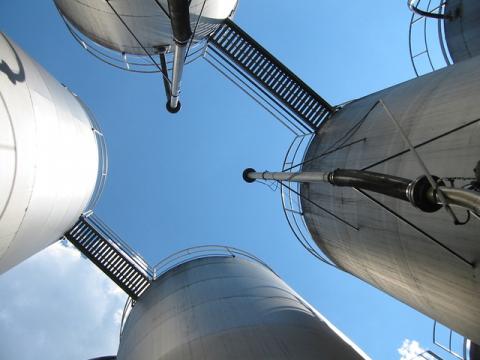
For the past couple weeks we've discussed LFL monitoring in chemical processes, the WHY & the HOW. Now let's see WHAT some real life examples look like (hint…they all have a common theme, they NEED an analyzer that can handle the uniquely tough chemical environment!):
Specialty Chemical - A global producer of high performance materials, industrial specialty chemicals and coating solutions, was using a catalytic sensor to monitor the LFL of the off-gas vent stream and experiencing an unacceptable 25 second response time.
They were continuously checking the %LFL of the mix of monomer vapors in the vent line. If the LFL went over 25% they bypassed the RTO and sent the high LFL stream to a caustic soda scrubber and active carbon filters without any ignition source. They also purged the duct with nitrogen starting at the RTO and up to the emergency vent. They did not want a high LFL stream to reach the combustion chamber of the RTO.
Therein lies the problem, with a 25 second response time, it was taking way too long to prevent a high LFL stream from going into the RTO! They needed an analyzer with a quicker response time, preferably less than 5 seconds.
- They chose to install an LFL Flammability Analyzer on their off‐gas vent stream. This analyzer has a very fast response time, less than 3 seconds (including sample transport time), and can react quickly to divert a high LFL stream from going to the RTO.
Find out more details.
Acrylic Resins - This Specialty Chemical Company manufactures a variety of colored, acrylic resins with properties such as impact resistance and excellent optics. Off-gas (methyl methacrylate) from the manufacturing process is collected in a process vent header that feeds a scrubber. The scrubber ultimately cleans the sample more, so it can go to the Vapor Recovery Unit. To save money on their steam cycle, they decided to continuously monitor their process and add water, as needed, instead of having a constant water flow.
To do this, they used two infrared analyzers to monitor the %LFL of methyl methacrylate entering the process vent header. If the %LFL reading went above 60, they added more water/steam to the scrubber, to scrub the sample before it went to the Vapor Recovery Unit.
But the infrared analyzers started to give inconsistent and unreliable readings! One analyzer even got filled with water condensation. So a decision to look for a different technology was made.
- That technology was an LFL Flammability Analyzer. Its rugged, industrial design can handle a tough environment. Its high temperature operation keeps all the elements in the vapor state, eliminating clogging and sample condensation.
Find out more details.
Incineration - A worldwide manufacturer of silicone, quartz and ceramic products for the adhesive labeling and semiconductor markets, wanted to monitor the flammability of the process exhaust stream going into its incinerator. The stream was of varying energy content and had solvent loads that changed rapidly in a matter of minutes.
Danger is present when the inlet stream to the incinerator suddenly gets rich enough to ignite or explode. They wanted to prevent this from happening! They needed an analyzer that could measure their wide range of chemicals, as well as highly corrosive compounds like methyl chloride.
- After a three year investigation of all the technologies available, they chose an LFL Flammability Analyzer. Its hard-coat aluminum construction is well suited for this application; it's fully heated to keep the sample stream in vapor form eliminating potential corrosion & has the unique ability to accurately measure the total flammability of all the constituents in the process exhaust stream.
Find out more details.

Add new comment